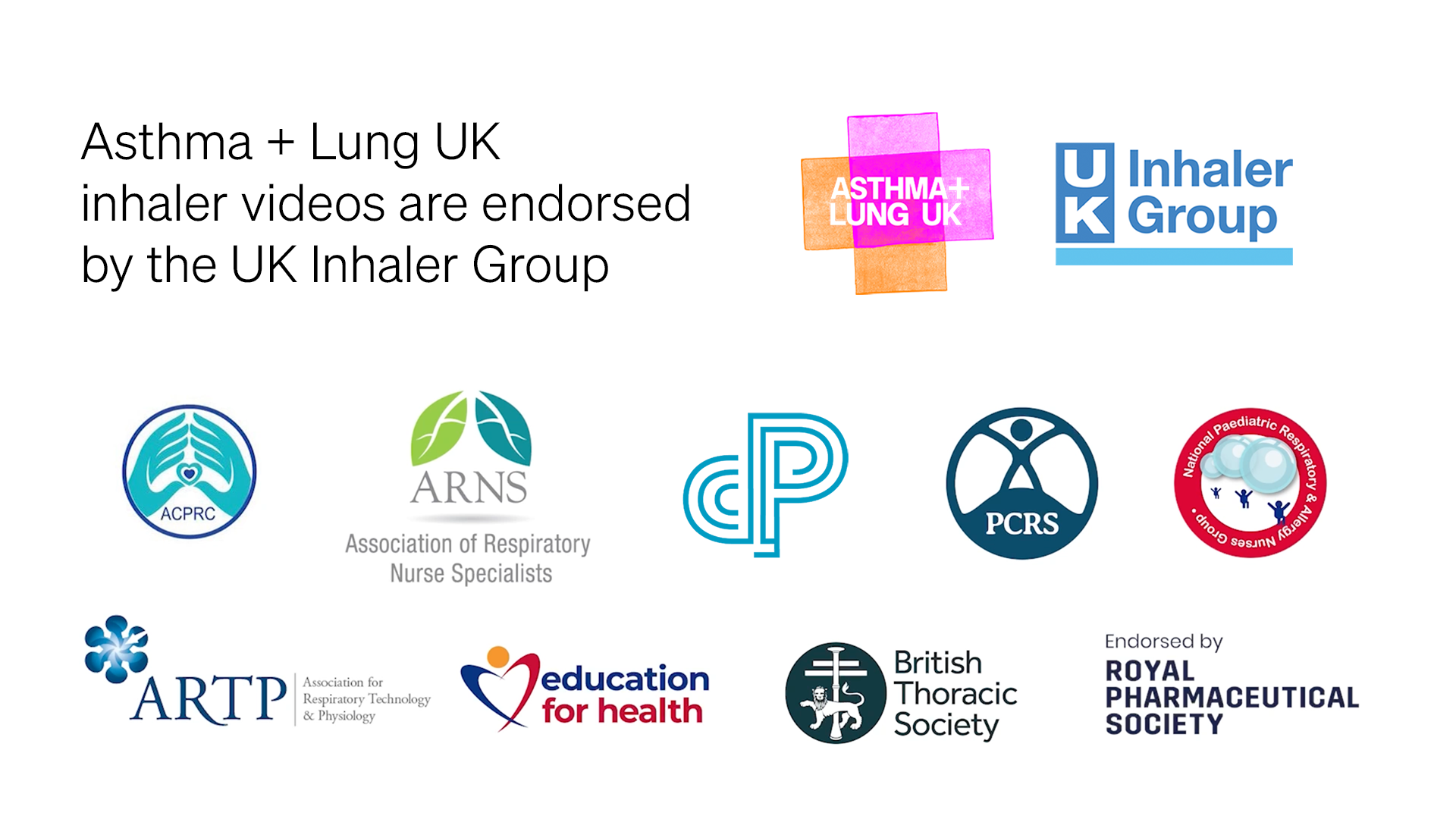In this short video, we show you how to use a Breezhaler inhaler correctly.
This is a type of dry powder inhaler (DPI).You do not need to use a spacer with this inhaler.
Dry powder inhalers are breath-actuated. This means you need to breathe in strongly to inhale the powder.

Expert advice for using a Breezhaler inhaler
Hi I'm Debbie. I'm an asthma specialist nurse. I'm going to show you how to use a Breezhaler. This is a dry powder device or DPI.
Getting your inhaler technique right is very important because it helps you manage symptoms better. It may take a few tries to feel comfortable using your inhaler, but it does get easier with practice.
To use your inhaler:
1. First take the cap off. Check there's nothing inside the mouthpiece.
2. Open the inhaler by pushing the mouthpiece back.
3. Next, take a capsule from the blister pack. Only use a capsule if it's been sealed inside the foil blister pack.
4. Put the capsule inside the inhaler. It's important to put the capsule into the inner chamber and not into the mouthpiece.
5. Close the inhaler until you hear a click.
6. Press and release the two buttons at the side of the inhaler to make a hole in the capsule.
Your dose is now ready.
7. Hold the inhaler horizontally but do not tip it upside down as the powder may fall out.
8. Sit or stand up straight and slightly tilt your chin up as it helps the medicine to reach your lungs.
The next steps all happen smoothly in one action.
9. Breathe out gently and slowly [through your mouth] away from the inhaler until your lungs feel empty and you feel ready to breathe in.
10. Put your lips around the mouthpiece to make a tight seal.
11. Then breathe in quickly and deeply [through your mouth] until your lungs feel full. You should be able to hear a vibrating noise.
12. Take the inhaler out of your mouth and hold your breath for up to 10 seconds or for as long as you comfortably can.
13. Then breathe out gently away [through your mouth] from the inhaler.
If you cannot hear the vibrating noise when you breathe in, the capsule may be stuck in the inner capsule chamber.
To loosen the capsule:
14. Open the inhaler by pushing the mouthpiece back and loosen the capsule by gently tapping the base of the inhaler.
15. Close the mouthpiece and follow steps (9 to 13) again, starting by breathing out slowly and gently [through your mouth].
16. When you've finished, open the inhaler and check that the capsule is empty.
17. If it is, tip it out into the bin, close the inhaler and replace the cap.
18. If the capsule is not empty, repeat the steps.
If you've used an inhaler that contains steroids, rinse your mouth with water and spit it out to reduce the chance of side effects.
For more tips on using your inhaler, why not watch our other videos.
Call 999 if:
You’re having an asthma attack or flare-up of your lung condition, and your reliever inhaler is not helping.
Check your inhaler technique
Good inhaler technique helps you breathe the medicine straight into your lungs, where it’s needed. This gives you the best chance of managing your symptoms.
If you’re using your inhaler as prescribed with the right technique, it can help you:
- manage your symptoms without needing to take a higher dose of your medicine
- reduce your risk of having an asthma attack or COPD flare-up. The medical word for this is exacerbation.
- manage your triggers better
- reduce side effects
- make your medicine last longer
- sleep better
- take part in exercise or other activities.
Even if you think your inhaler technique is OK, you may still be able to improve it so that more of the medicine gets deep into your lungs.
It’s especially important to check your inhaler technique if:
- your symptoms are getting worse, or you’ve recently had an asthma attack or COPD flare-up (exacerbation)
- you’re using a new type of inhaler.
You can ask your GP, nurse or pharmacist to check your inhaler technique. Remember that you do not need an appointment to get help from a pharmacist at your local pharmacy.
Tips to help you use your inhaler correctly
Try sitting or standing up straight when using your inhaler. Lifting your chin slightly and holding the inhaler upright can help the medicine reach your lungs.
You might find it helpful to sit or stand in front of a mirror to check your head position.
Place the inhaler in your mouth and make a tight seal around the mouthpiece. A tight seal helps make sure you get the full dose of the medicine.
Before using your inhaler, breathe out through your mouth as much as you can. This creates more space in your lungs so you can take a full breath in through your mouth when you use your inhaler.
Holding your breath after taking your inhaler allows the medicine to settle in your lungs.
If you can, hold your breath for 10 seconds. But only hold your breath for as long as you feel comfortable – the inhaler will still work.
Some preventer inhalers and combination inhalers, like Maintenance and Reliever Therapy (MART) and anti-inflammatory reliever (AIR), contain steroid medicine.
The steroid medicine can build up on the back of your throat, mouth and tongue and cause side effects including:
- a hoarse voice
- cough
- sore throat
- a mouth infection called oral thrush.
Rinse your mouth with water and spit it out after using your preventer or combination inhaler. This can help to clear any medicine that is stuck in your mouth or throat and help prevent side effects.
Getting into a good medicine routine
- Set yourself daily reminders on your phone. This can be useful if you’re away from home too. You could also write yourself a note in your diary or in your calendar. You may also want to set a reminder for ordering your prescriptions too.
- Keep your inhaler and spacer (if you have one) on your bedside table or near something else you use often, like your daily bag or keys.
- Link taking your inhaler to another daily habit. Research shows you’re more likely to remember to take your medicine every day if you link it to something you already do.
- Ask family or friends to remind you or use an app like the NHS medication reminder service.
This video is not a replacement for professional medical advice. If you’re finding it hard to use your inhaler or you’re worried about your symptoms, please speak with a healthcare professional.
Your GP, nurse or pharmacist can check your inhaler technique. Remember that you do not need an appointment to get help from a pharmacist at your local pharmacy.
Always read the patient information leaflet inside your medicine packet. It tells you more about your medicine, including all the possible side effects and how to store the medicine safely. Speak to your GP, nurse or pharmacist if you have any questions.
Asthma + Lung UK does not endorse or recommend specific products. Read more about how we create our health advice information.


Get support
Call our helpline for support with your condition. Get advice on your medicines, symptoms or travelling with a lung condition, or just call us to say hello.
Find out more









